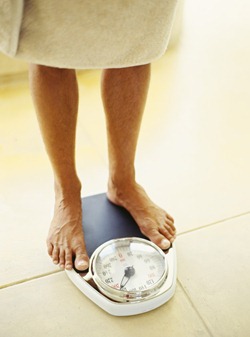
Do you have an internal voice which says: “I’ll never lose weight because I’m lazy” or “I have no willpower”. If you keep thinking this way, your weight loss targets will be much harder to achieve. You need to keep a positive outlook on your weight loss journey.
Negative thoughts and emotions become a self-fulfilling prophecy. If you keep telling yourself “I can’t lose weight” – you won’t. There are several ways that you can be more positive about your weight loss:
- Put your mind in control – instead of just reacting instinctively, try to be logical
- Concentrate on what you can eat, instead of bemoaning what you can’t
- Don’t think of exercise as a drag – think of the health benefits it gives and focus on how good you feel after exercising
Don’t Pigeonhole Yourself
If you keep thinking of yourself as being addicted to sugar/biscuits/cakes etc. this will make it harder for you to lose weight. Instead, think of yourself as someone who enjoys a healthy diet, and who is progressing towards a healthy weight. Don’t put yourself in a box. Think about how you would like to be, and start thinking of yourself in that way. Take control of your life and define how you want to be.
Don’t Sweat the Small Stuff
Weight loss is a journey, and every journey has it’s ups and downs. Maybe you stood on the scales and your weight had increased a notch, or maybe you ate junk food or skipped your exercise class. If you fall off the wagon in this way, don’t beat yourself up – look upon it as a minor stumbling block and resolve to try harder next time. Don’t focus on perceived “failure”.
I often work with clients who feel down when they don’t achieve every single weight-loss target. People get downhearted because they didn’t complete every single exercise session planned for the week, or because they caved in and ate a biscuit or two. When this happens, I try to put things in perspective. The client who skipped a few exercise sessions? Until recently, he hadn’t exercised in almost 10 years – in this context, skipping a few sessions is no big deal. And the client who ate a few biscuits? A few weeks back, they were consuming nothing but junk food. Try to put your slip-ups in context. None of us are perfect, and so long as you are going in the right direction, you’ll achieve your target weight.
Now it’s Your Turn!
Write down 5 things which interfere with your weight loss goals e.g. “I don’t have enough time to exercise” or “I have a sweet tooth”. Then write down 5 ways you will overcome these obstacles. Keep this and refer to it when you find yourself beset by negative thoughts!
Stay positive – you’ll achieve your weight-loss goals!
If you’re in the Shannon area and need help with weight loss, find out more about our services, or give us a call on 087 930 7575.




